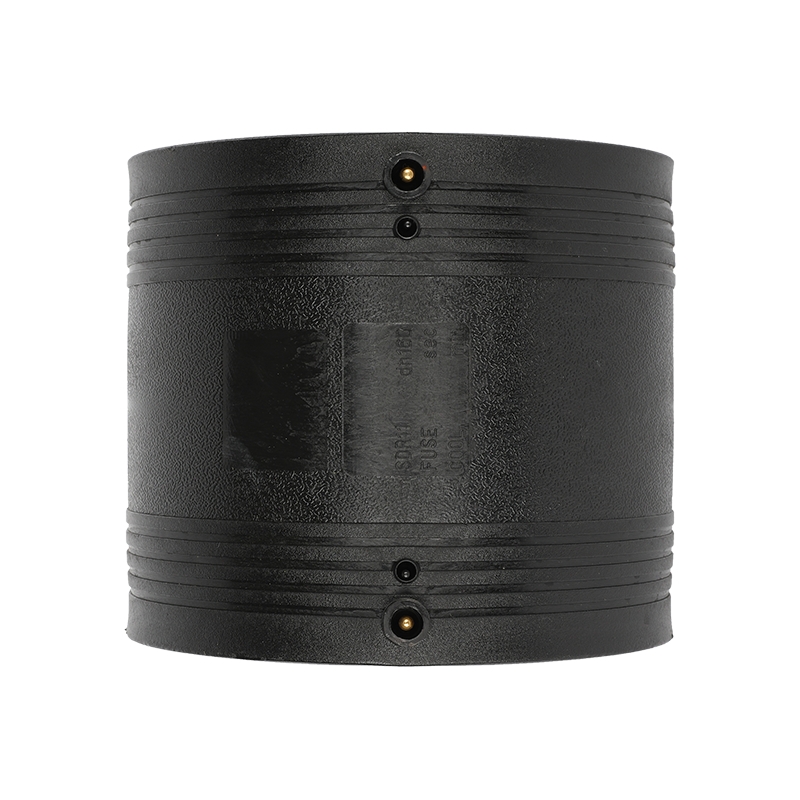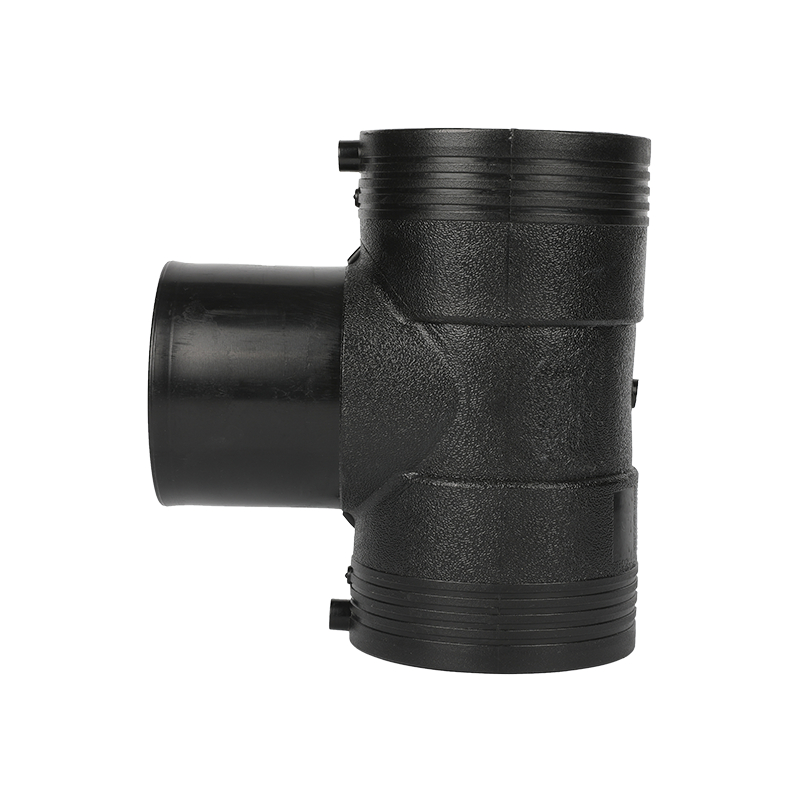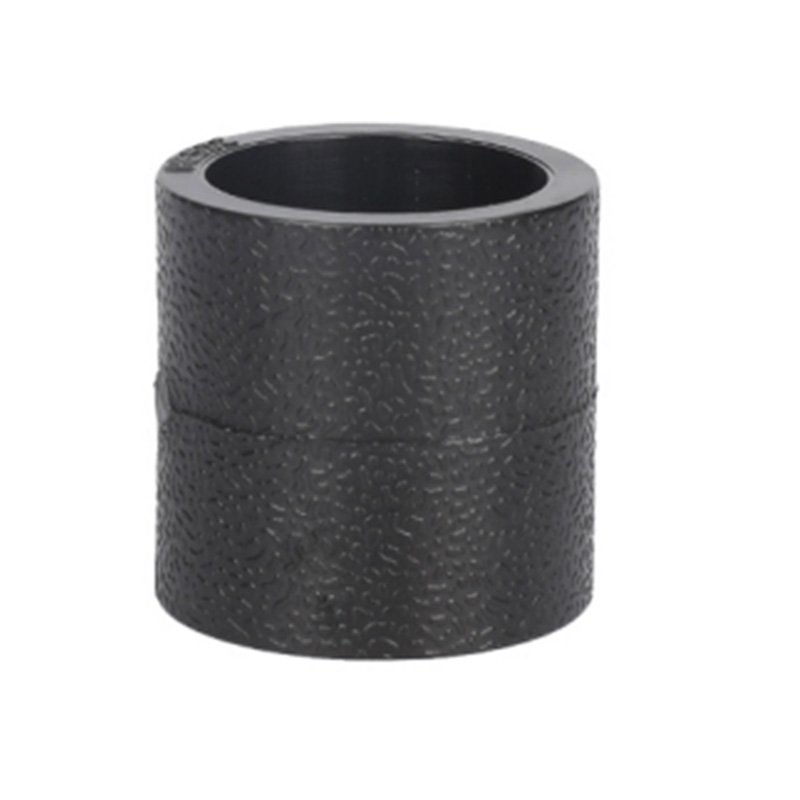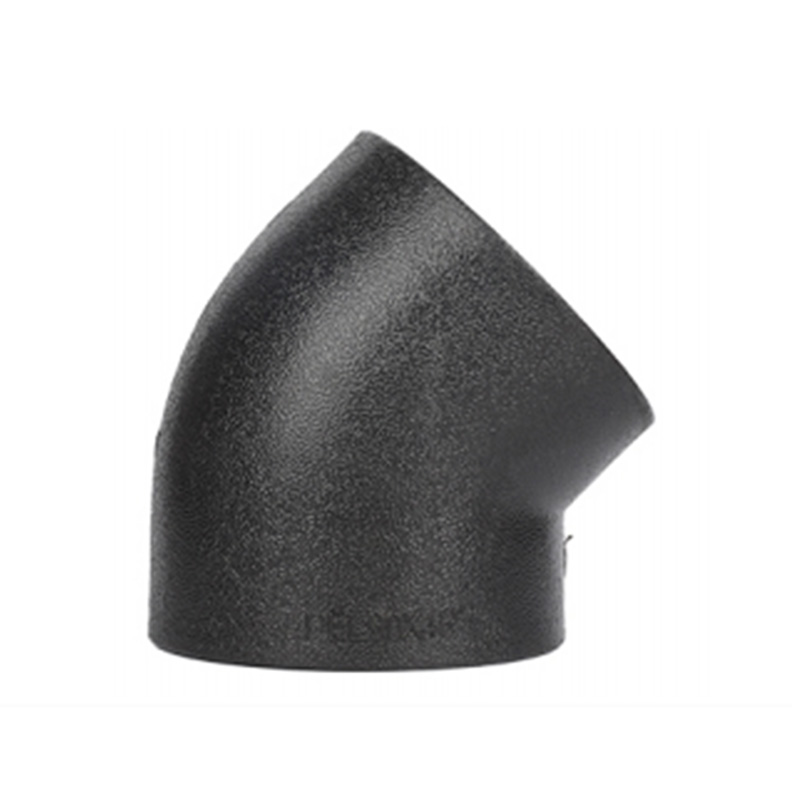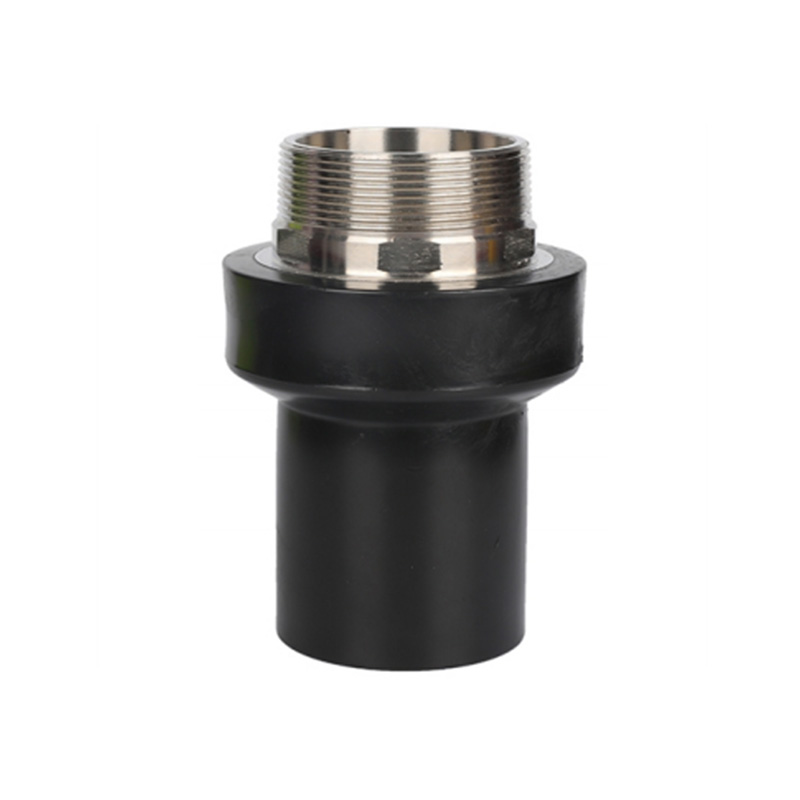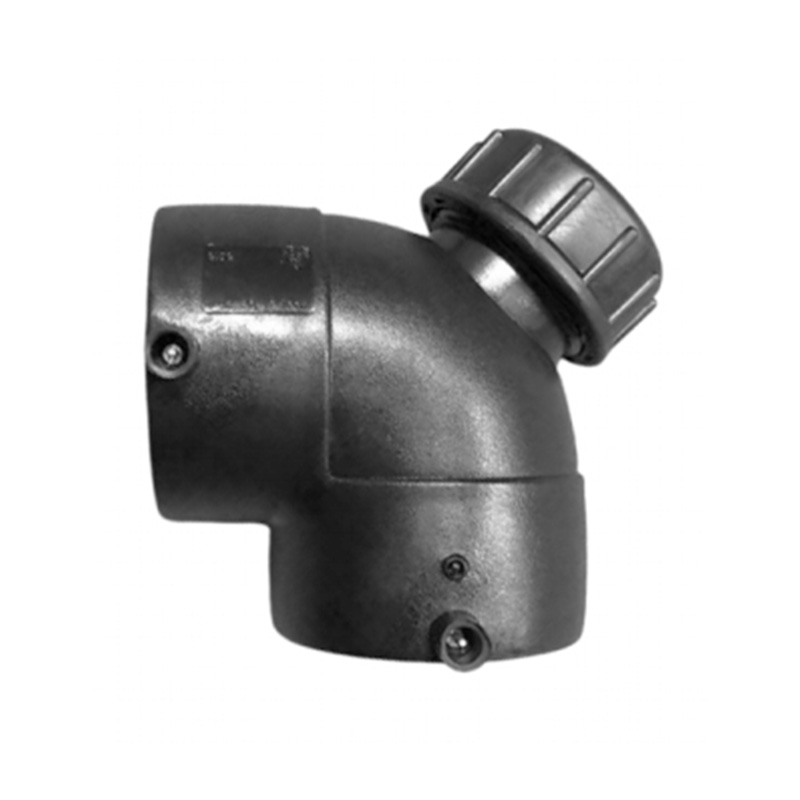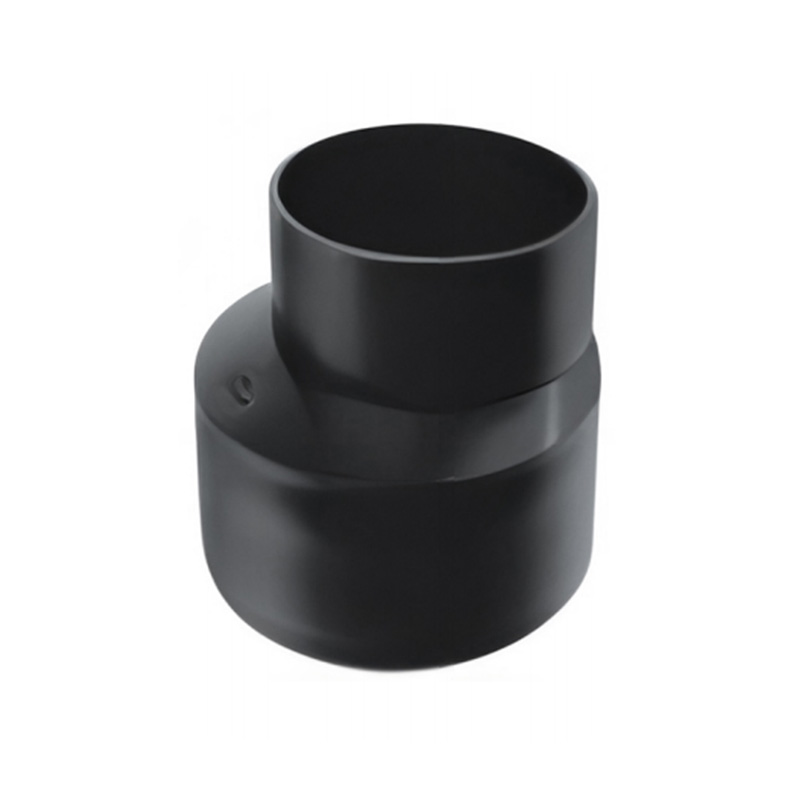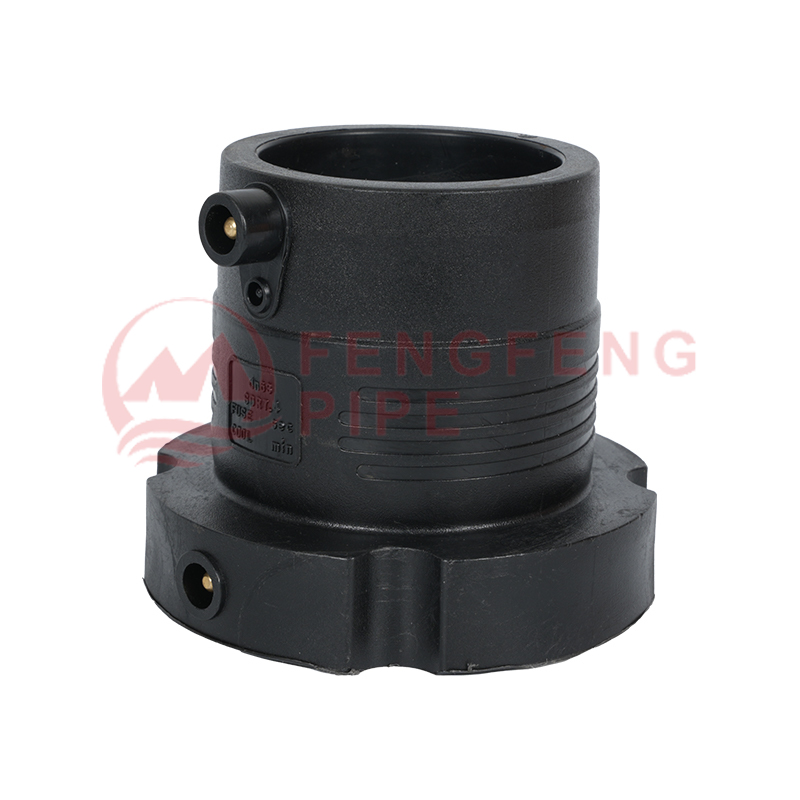Why engineers are choosing hdpe butt fusion for critical infrastructure
 2025.08.18
2025.08.18
 Industry news
Industry news
What is HDPE (High-Density Polyethylene)?
High-Density Polyethylene (HDPE) is a robust and versatile thermoplastic polymer known for its high strength-to-density ratio. It is a type of polyethylene, distinguished by its minimal branching, which gives it a high density and makes it a rigid and strong material. This polymer is widely used in various industries for products ranging from pipes and bottles to geomembranes and plastic lumber.
Overview of Butt Fusion Welding
Butt fusion is a reliable and common method for joining two pieces of thermoplastic pipe together. The process involves heating the ends of the pipes until a molten state is achieved and then pressing them together under controlled pressure. The heated, melted material from each pipe end mixes and solidifies as it cools, forming a single, homogeneous, and leak-proof joint. This welding technique is particularly effective for large-diameter pipes and is a cornerstone of a well-connected pipeline.
Why Use Butt Fusion for HDPE Fittings?
Butt fusion is the preferred method for joining HDPE pipes and fittings due to its ability to create a joint that is as strong as, or even stronger than, the pipe itself. Unlike mechanical joints that can be susceptible to leaks or corrosion, a properly executed butt fusion joint is monolithic, meaning it becomes one continuous piece of material. This ensures exceptional durability, prevents leaks, and maintains the integrity of the pipeline under various conditions, including high pressure and chemical exposure.
Understanding HDPE Fittings
Types of HDPE Fittings
HDPE butt fusion fittings come in a wide variety of shapes and sizes to accommodate different piping system configurations. The most common types include:
-
Elbows: Used to change the direction of a pipe run, typically available in 45 and 90-degree angles.
-
Tees: Used to create a branch line, allowing a pipe to split into two separate directions.
-
Couplers (or Sockets): Used to join two pipes of the same diameter in a straight line.
-
Reducers: Used to connect pipes of different diameters. They can be concentric or eccentric, depending on the application.
-
End Caps: Used to seal the end of a pipe run.
-
Flange Adapters and Stub Ends: Used to connect HDPE pipes to flanged components like valves or pumps.
Material Properties of HDPE
HDPE is an ideal material for piping and fittings due to its exceptional properties:
-
High Strength-to-Density Ratio: Offers a strong, durable structure while remaining lightweight.
-
Flexibility: Can be bent to a certain degree, allowing for installation in varied terrains and reducing the need for multiple fittings.
-
Impact Resistance: Highly resistant to impact and fracture, even in cold temperatures.
-
UV Resistance: Stabilized to resist degradation from ultraviolet light, making it suitable for above-ground installations.
-
Low Temperature Ductility: Maintains its toughness and resistance to cracking even in freezing conditions.
Advantages of Using HDPE Fittings
The use of HDPE fittings provides numerous benefits for a piping system:
-
Corrosion Resistance: Unlike metal pipes, HDPE does not rust, rot, or corrode, even when exposed to harsh chemicals or corrosive soils.
-
Durability and Longevity: With a design life of 50 to 100 years, HDPE systems offer a long-lasting, reliable infrastructure solution.
-
Chemical Resistance: HDPE is resistant to a wide range of chemicals, making it suitable for industrial and chemical transfer applications.
-
Leak-Proof Joints: When properly butt-fused, the joints are homogeneous and as strong as the pipe itself, eliminating potential leak points.
-
Cost-Effectiveness: The long service life, minimal maintenance requirements, and ease of installation contribute to a lower total cost of ownership.
The Butt Fusion Process Explained
Preparing the Pipe Ends
Proper preparation is the most critical step to a successful butt fusion joint. The process begins with thoroughly cleaning the inside and outside of the pipe ends to remove any dirt, moisture, or contaminants. The pipe ends are then secured in the fusion machine's clamps, ensuring they are perfectly aligned. Next, a facing tool shaves a thin, clean layer from each pipe end, creating smooth, parallel surfaces that are perpendicular to the pipe's centerline. It is crucial to remove all shavings and debris after this step without touching the newly faced surfaces.
Heating Process
The heating phase begins after the pipe ends are prepared. The heating plate, which has a non-stick coating, is heated to a specific temperature, typically between 400°F and 450°F (204°C and 232°C). The faced pipe ends are pressed against the heating plate under a controlled pressure. This melts the plastic and forms a "bead" of molten material around the circumference of each pipe end. The heating time is calculated based on the pipe's diameter and wall thickness to ensure sufficient heat is absorbed for a strong fusion.
Fusion and Cooling Stages
Once the specified heating time is complete, the pipes are retracted, the heating plate is quickly removed, and the two molten ends are brought together under a controlled fusion pressure. The molten beads from each pipe end mix and solidify, forming a monolithic bond. This is followed by the cooling stage, during which the joint is held under pressure and allowed to cool undisturbed. The cooling time is also determined by the pipe's diameter and wall thickness. This is a crucial step as it allows the plastic's molecular structure to re-crystallize and achieve its full strength.
Visual Inspection of the Joint
A thorough visual inspection is the first line of quality control for a butt fusion joint. The following characteristics are key indicators of a successful fusion:
-
Symmetrical, Uniform Beads: Both the internal and external beads should be uniform in size and shape around the entire circumference of the pipe. The beads should be smoothly rolled over, with no sharp edges.
-
Even Alignment: The pipes should be aligned with minimal "high-low" or misalignment between the two joined sections. The outside diameter should be continuous across the joint.
-
No Contamination or Voids: The bead should be solid and free of any visible contaminants, such as dirt or debris, which would appear as voids or discontinuities in the bead.
-
Bead Characteristics Comparison Table:
|
Feature |
Acceptable Joint |
Unacceptable Joint |
|
Bead Shape |
Smooth, uniform, and symmetrically rolled-over. |
Flattened, asymmetrical, or sharp-edged. |
|
Bead Size |
Consistent around the circumference, within a specified range. |
Inconsistent; one side is larger than the other. |
|
V-Groove |
Minimal "V" groove between the beads. |
A deep or uneven "V" groove. |
|
Alignment |
Pipes are aligned with minimal offset. |
Significant misalignment between pipe ends. |
Applications of HDPE Butt Fusion Fittings
Water Distribution
HDPE butt fusion fittings are extensively used in water distribution systems. Their ability to create a completely leak-proof network is critical for conserving water and preventing contamination. The corrosion resistance of HDPE means these systems can be buried in various soil types without risk of degradation, ensuring a long-lasting and reliable supply of potable water.
Gas Distribution
In the gas distribution industry, safety and reliability are paramount. HDPE butt fusion provides a seamless, monolithic pipe network that is highly resistant to leaks and corrosion. The flexible nature of HDPE allows it to withstand ground movement and seismic activity better than rigid pipe materials, making it an ideal choice for safely transporting natural gas.
Industrial Piping
For industrial piping, HDPE butt fusion fittings are used in a variety of applications, including the transfer of chemicals, slurries, and other industrial fluids. The material's exceptional chemical resistance means it can handle a wide range of corrosive substances that would quickly degrade metal pipes. The high-pressure ratings achievable with properly fused joints make it suitable for demanding industrial processes.
Mining
The mining sector utilizes HDPE for its robust nature and resistance to abrasion. HDPE pipes are used for transporting water, tailings, and process fluids. The durability and ease of installation of HDPE, combined with the strength of butt-fused joints, make it a cost-effective and reliable solution for the harsh and remote conditions of mining operations.
Landfill
In landfill applications, HDPE is critical for constructing leachate collection systems and gas extraction pipelines. The material's impermeability and resistance to chemical attack from waste byproducts ensure that the systems remain functional and prevent environmental contamination. Butt fusion creates joints that are strong enough to withstand the stress of ground settlement and the aggressive chemical environment.
Standards and Regulations
ASTM Standards for HDPE Fittings and Fusion
The quality and reliability of HDPE butt fusion fittings are ensured through adherence to rigorous standards developed by organizations such as ASTM International. Key standards include:
-
ASTM D3261: This standard specifically covers butt heat fusion polyethylene fittings for use with polyethylene pipe. It outlines the requirements for materials, dimensions, and performance, including sustained pressure and burst pressure.
-
ASTM D3350: This is the standard specification for polyethylene plastic pipe and fittings materials. It provides a classification system ("cell classification") based on material properties like density, melt index, and environmental stress crack resistance, which helps in selecting the appropriate material grade for a specific application.
-
ASTM F2620: This is a crucial standard practice that outlines the recommended procedures for the heat fusion joining of polyethylene pipe and fittings, ensuring a strong, leak-free connection.
-
ASTM F3124: This standard practice is for data recording of the procedure used to produce heat butt fusion joints in plastic piping systems. It provides a framework for documenting critical fusion parameters for quality assurance and traceability.
Industry-Specific Regulations
Beyond general ASTM standards, specific industries have their own regulatory requirements for HDPE piping systems:
-
Gas Distribution: In the United States, the Department of Transportation (DOT) regulations (49 CFR, Part 192) require that all joints in a gas piping system be made in accordance with written procedures that have been tested and proven to produce strong, gastight joints.
-
Water Utilities: Organizations like the American Water Works Association (AWWA) publish standards for the design and installation of water systems, such as AWWA C906, which covers polyethylene pressure pipe and fittings for water distribution systems.
-
General Practice: Industry associations like the Plastics Pipe Institute (PPI) also provide technical reports and guidelines, such as PPI TR-33, which offers a generic butt fusion joining procedure.
Importance of Compliance
Compliance with these standards and regulations is not merely a formality; it is essential for:
-
Ensuring Safety: Proper fusion and material standards are vital for preventing pipe failures, which can lead to hazardous leaks, especially in gas or chemical applications.
-
Guaranteed Performance: Adherence to standards ensures that the pipeline will meet its designed pressure ratings, flow capacities, and longevity expectations.
-
Maintaining Reliability: Following established procedures minimizes the risk of joint failures, which can cause costly service interruptions and repairs.
-
Legal and Contractual Requirements: In many projects, compliance with these standards is a contractual obligation and a legal requirement, providing a framework for quality assurance and a basis for liability.
Butt Fusion Equipment and Tools
Butt Fusion Machines
Butt fusion machines are the core equipment used to perform the fusion process. They are categorized by their level of automation:
|
Feature |
Manual Machine |
Semi-Automatic Machine |
Automatic Machine |
|
Control |
Operator manually controls all pressure and movement. |
Operator sets parameters; machine performs heating and fusion pressure control. |
Machine automatically performs the entire process after operator inputting pipe data. |
|
Operator Skill |
Requires a highly skilled operator to ensure a quality weld. |
Reduces the dependence on operator skill, as the machine manages critical parameters. |
Minimizes human error and requires minimal operator skill after initial setup. |
|
Efficiency |
Slower process, suitable for small-scale projects or repairs. |
Faster and more consistent than manual methods. |
Highest efficiency, ideal for large-scale, high-volume projects. |
|
Consistency |
Highly dependent on operator technique. |
Provides more consistent and repeatable joints. |
Ensures maximum consistency and traceability of the fusion process. |
Heating Plates
The heating plate, also known as a heater or a hot plate, is a crucial component that melts the pipe ends. It is a flat plate with a non-stick coating, typically PTFE (Teflon), to prevent the molten plastic from sticking. The plate is electrically heated to a precise temperature, which is constantly monitored by a thermostat or digital controller. The size and wattage of the heating plate are matched to the specific diameter of the pipe being fused to ensure uniform heat distribution.
Facing Tools
A facing tool is used to prepare the pipe ends for fusion. It is a rotating cutter that shaves off a thin layer of plastic from the pipe ends, creating clean, parallel surfaces. This step is essential for removing any dirt, moisture, or oxidation and ensuring that the two surfaces will mate perfectly for the fusion process. Facing tools can be powered by electricity or operated manually, and they are typically integrated into the butt fusion machine's carriage.
Alignment Clamps
Alignment clamps, or pipe clamps, hold the pipe and fittings securely in place during the entire butt fusion process. They ensure that the pipe ends are perfectly aligned to the centerline of the machine and each other, preventing any "high-low" or offset in the joint. The clamps are designed to withstand the facing and fusion pressures without allowing the pipe to slip or move. Many machines come with interchangeable clamps or inserts to accommodate a wide range of pipe diameters.
Installation Best Practices
Proper Pipe Alignment
Achieving and maintaining proper pipe alignment is arguably the most critical factor for a successful butt fusion joint. The pipe ends must be centered in the machine clamps and aligned with each other, both horizontally and vertically. Any misalignment, often referred to as "high-low," can create a weak, uneven joint that is prone to failure under pressure. Best practices include:
-
Using pipe supports to maintain the pipe's centerline.
-
Securely clamping the pipes to prevent movement during facing and fusion.
-
Checking the alignment after facing and adjusting if necessary, always by tightening the higher side of the clamp.
Temperature Control
The temperature of the heating plate is a key variable in the fusion process. It must be precisely controlled and maintained within the recommended range for the specific HDPE material.
-
Optimal Temperature: The standard temperature range is typically between 400°F and 450°F (204°C and 232°C).
-
Verification: Use a calibrated surface pyrometer to regularly check the temperature of the heating plate's surface, as the internal thermometer may not reflect the actual surface temperature.
-
Environmental Factors: In cold or windy conditions, the fusion area should be shielded to prevent heat loss from the plate and the pipe ends. Some procedures may require pre-heating the pipe ends in very cold weather to ensure a proper melt.
Pressure Control
The correct pressure must be applied during both the heating and fusion stages of the process.
-
Facing Pressure: This pressure is applied to the pipes against the facing tool to ensure a smooth, parallel cut.
-
Heating Pressure (Bead-Up): An initial pressure is applied to the pipes against the heating plate to create a small, uniform bead. This is followed by a "zero-pressure" or "drag-pressure-only" stage, where the pipe ends are held against the heater with minimal force to allow for proper heat soak without squeezing the molten material out of the joint area.
-
Fusion Pressure: After the heater is removed, a specific fusion pressure is applied to join the molten ends. This pressure is calculated based on the pipe's diameter, wall thickness, and the machine's drag pressure. It must be held constant for the entire cooling time.
Cooling Time
The cooling time is the period during which the fused joint is held under pressure and allowed to solidify. It is a critical step that allows the polymer's molecular structure to re-crystallize and achieve its full strength.
-
Calculation: The cooling time is determined by the pipe's wall thickness. A common rule of thumb is 11 minutes per inch of wall thickness, as specified in ASTM F2620.
-
Do Not Rush: Never attempt to shorten the cooling time by using external cooling methods like water or wet cloths, as this can lead to a weak, stressed joint.
-
Maintain Pressure: The joint must remain undisturbed and under the specified fusion pressure throughout the entire cooling period. Releasing the pressure too soon can compromise the integrity of the joint.
Advantages and Disadvantages of Butt Fusion
Strength and Reliability of Joints
The primary advantage of HDPE butt fusion is its ability to create a joint that is as strong as, if not stronger than, the pipe itself. The process creates a single, continuous, and homogeneous structure, eliminating the need for mechanical fasteners, gaskets, or other materials that can be points of failure. This monolithic joint ensures exceptional tensile strength and pressure resistance. A properly fused joint is not only leak-proof but also highly resistant to the stresses of ground movement, seismic activity, and surges in pressure.
Cost Considerations
While the initial cost of butt fusion equipment can be high, the method often proves to be cost-effective in the long term. This is because:
-
No Fittings Required: Butt fusion can be used to join two pipes directly, eliminating the need for expensive fittings in some applications, unlike other methods like electrofusion.
-
Reduced Maintenance: The durability and leak-proof nature of the joints significantly reduce long-term maintenance and repair costs.
-
Lower Labor Costs for Large Projects: On large-scale projects, the speed and efficiency of butt fusion, especially with automated machines, can lead to lower overall labor costs compared to other joining methods.
-
Material Efficiency: Butt fusion uses the pipe material itself to create the joint, reducing the need for costly external materials.
Limitations of the Process
Despite its many advantages, butt fusion has some limitations:
-
Environmental Sensitivity: The process is highly sensitive to environmental conditions such as wind, cold temperatures, and moisture, which can affect the quality of the joint. Special shelters or precautions are often required in adverse weather.
-
Geometric Constraints: The method is best suited for straight pipe runs. It is not as versatile as other methods, like electrofusion, for making connections in tight spaces or for joining pipes at complex angles.
-
Overtakes Other Pipe Systems: It can only join pipes of the same outside diameter and wall thickness. This limits its use when trying to connect different types of pipes or pipes with varying pressure ratings.
-
Equipment and Skill: Butt fusion requires specialized, often expensive, equipment and trained, skilled operators to ensure a high-quality, reliable joint.
Troubleshooting Common Issues
Misalignment
Misalignment occurs when the pipe ends are not perfectly centered and perpendicular to each other during the fusion process. This leads to an uneven joint with varying bead sizes and a potential "high-low" area where the pipe walls do not meet correctly.
-
Cause: Improper clamping, uneven pipe ends from poor cutting, or heavy pipes pulling on the clamps.
-
Troubleshooting: Ensure the pipe ends are precisely faced and clamped. Use roller stands to support long lengths of pipe and minimize drag pressure. Always adjust alignment by tightening the higher side of the clamp, never by loosening the low side.
Cold Fusion
Cold fusion is a defect that results from insufficient heat or time during the heating stage. The molecular chains in the HDPE do not reach a fully molten state and are unable to bond properly, creating a weak joint that can fail under pressure. This is a common issue in cold weather.
-
Cause: Insufficient heating plate temperature, short heating time, or a significant temperature difference between the heating plate and the pipe ends.
-
Troubleshooting: Verify the heating plate's temperature with a calibrated pyrometer. Adhere to the specified heating times, and when working in cold or windy conditions, use a shelter to protect the fusion area and consider pre-heating the pipe ends in very cold weather to ensure a proper melt.
Overheating
Overheating occurs when the pipe ends are exposed to excessive heat or pressure for too long. This can degrade the polymer, causing it to lose its structural integrity and resulting in a weak, brittle joint. The beads may appear burnt or bubbly.
-
Cause: Heating plate temperature is too high, or the heating time is too long. Excessive pressure applied during the heating stage can also force molten material out of the joint, leaving a concave and weak fusion area.
-
Troubleshooting: Calibrate the fusion machine and heating plate. Use a pyrometer to ensure the plate is within the specified temperature range. Always follow the manufacturer's recommended parameters for heat, time, and pressure, and avoid applying pressure during the heat soak phase.
Contamination
Contamination is the introduction of foreign materials into the fusion joint. Even microscopic particles like dust, dirt, moisture, or oil can prevent the molecular chains from bonding, creating a weak point that is invisible to a visual inspection.
-
Cause: Dirty pipe ends, dusty environments, touching the faced surfaces with hands, or using dirty rags to clean the pipes.
-
Troubleshooting: Always work in a clean environment and use a shelter if necessary. Immediately after facing, wipe the pipe ends with a clean, lint-free cloth or a non-synthetic rag. Never touch the faced surfaces with your hands. Use end caps to protect the pipe ends from debris before fusion.
Maintenance and Inspection
Visual Inspections
Visual inspection is the first and most fundamental step in maintaining the integrity of an HDPE butt fusion pipeline. While in-ground pipelines are not easy to inspect, above-ground sections and joints must be regularly checked for any signs of damage or stress.
-
Bead Quality: Check the butt fusion beads for uniformity and symmetry. A healthy joint will have smooth, evenly rolled beads on both the interior and exterior of the pipe. Any signs of a flattened, narrow, or asymmetrical bead could indicate a defect like misalignment or insufficient fusion pressure.
-
Surface Condition: Inspect the pipe for signs of damage, such as scratches, gouges, or deep cuts, which can compromise the pipe's integrity. Also, look for signs of UV degradation in above-ground installations, which can cause the pipe to become brittle.
-
Joint Contamination: Inspect the bead for any signs of contamination, such as embedded dirt or debris, which could indicate a weak point in the joint.
Pressure Testing
Pressure testing is a crucial step to ensure the pipeline is leak-free before it is put into service. Unlike metal pipes, HDPE pipe will expand under pressure, which can make it difficult to determine if a pressure drop is due to a leak or natural expansion. The industry standard, outlined in ASTM F2164, accounts for this "creep" in the material.
-
Hydrostatic Testing: The preferred method is hydrostatic testing, which uses a non-hazardous liquid like water. Air or pneumatic testing is not recommended due to the potential for catastrophic failure if the pipe ruptures.
-
Test Procedure: The pipeline is filled with water and pressurized to a level of at least 1.5 times the system's design pressure. The test typically involves a conditioning period to allow for initial pipe expansion, followed by a stabilization period and a final test period. A passing test is determined by measuring a very small amount of make-up water required to maintain pressure, as defined by specific standards.
Repair Procedures
Despite the durability of HDPE, damage can occur from external factors like third-party excavation. Repairs for HDPE pipelines can be done using a variety of methods:
-
Cutting and Refusing: For minor defects or damage, the affected section can be cut out, and a new piece of pipe can be fused into place using a fusion machine.
-
Mechanical Fittings: In situations where fusion is not feasible due to space constraints or wet conditions, mechanical couplings can be used. These fittings provide a temporary or permanent repair by clamping a new section of pipe into the line.
-
Extrusion Welding: For minor surface damage, a handheld extrusion welder can be used to add a new layer of plastic to the damaged area, reinforcing it.
KEEP IN TOUCH


